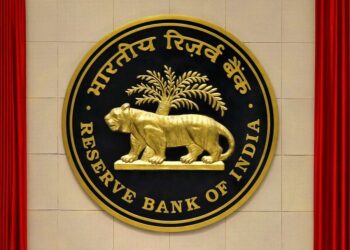At a monetary policy meeting on August 5, 2022, the Reserve Bank of India (RBI) announced the repo rate be increased by 50 basis points to 5.40%. This is the third time the RBI repo rate has been hiked this year.
The first hike came in May when the repo rate was increased by 40 basis points or 0.40%. This was the first rate hike after nearly two years. Another hike came in June when the repo rate was increased by 50 basis points. In total, the repo rate has increased by 140 basis points this year and is at its highest since before the pandemic in 2020.
This increase is expected to affect the rate at which banks and financial institutions offer loans to the public.
What is the RBI repo rate?
When commercial banks and financial institutions require funds, they turn to the central bank to borrow money. The central bank assigns funds as a type of short-term loan against securities such as treasury bills and government bonds. Repo rate is the rate at which a country’s central bank, in this case, RBI, lends money to banks and other financial institutions.
The central bank uses the RBI repo rate as a tool to regulate the amount of liquidity in the economy.
Decreasing the repo rate encourages banks to borrow more money from the central bank. This, in turn, increases liquidity in the economy. Increasing the repo rate will disincentivize banks from borrowing, reducing the money supply in the economy.
Why has RBI raised the repo rate?
RBI uses the repo rate as a tool to control inflation.
In the present case, facing inflationary pressures, RBI has increased the repo rate to reduce the amount of liquidity in the economy and arrest rising prices. With higher borrowing rates, businesses and customers will be discouraged from taking loans, and the money supply in the market will decrease. This will stamp down escalating costs.
What is bank repo rate?
A change in RBI repo rate affects the rate at which commercial banks offer loans, which is known as the bank repo rate. If RBI increases the repo rate, the bank repo rate will also increase. The current repo rate will put pressure on banks by increasing their cost of borrowing. In turn, the loan rates offered to the public will also increase.
Due to this, many customers will be discouraged from taking loans at all. Those who already have loans without a fixed rate might explore extending their loan term.
What does the future of borrowing look like?
Experts believe that the rate hike cycle will continue in the near future. The RBI is expected to further raise interest rates, given the continued rise in inflation. The Consumer Price Index measures retail inflation in India. At 7.41%, the retail inflation is much higher than RBI’s upper margin of 6%. Part of the reason is global inflationary dynamics which has seen countries like the United States reeling under rising costs.
Unless inflation rates and commodity prices drop for a considerable time, the rate hike is expected to continue.
In a bid to control rising inflation, the RBI has increased the repo rate. This is likely to increase the bank repo rate as well. The rate hike is not expected to slow down soon, but these monetary tools employed by RBI should ease the price pressures plaguing consumers in the current economy.








